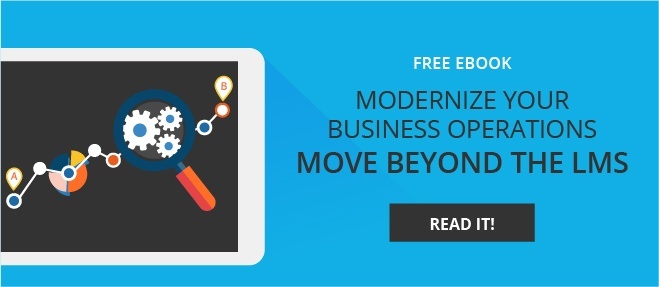Smaller, faster, less expensive – It’s what we’ve come to expect from everything mobile. Training systems are no exception, and in just two short decades the entire world of learning has been turned upside-down.
Traditional learning – what’s known as “Instructor-Led Training” or ILT – is costly from a number of angles, to the point that standard Learning Management Systems are cheaper than ILT by a factor of 1/5-10th the cost.
e-Learning systems are now taking a back seat in cost and effectiveness to the modern/mobile approach. Some ways we see mobile learning pulling ahead cost-wise to traditional LMS are:
Content
Traditional e-Learning is based on pre-packaged third-party content modules that may not be directly applicable to your needs. Mobile learning systems can create in-house training using existing technologies that are up-to-date. Mobile systems also make immediate use of crowdsourced feedback, instantly disseminating corrections and supplemental information as they are submitted.
Set-Up
Mobile learning is often a cloud-based subscription model, storing content and messages in the cloud, accessible from anywhere and administered by the cloud application team. Legacy learning management systems require hardware and software configuration, regular updates to both, usually administered by a permanent staff member, all of which is costly and time-consuming.
Training Time/Location
Most out-of-date learning courses are run on an old computer in a back room, taking employees off the floor while they sit and passively learn. Mobile learning takes place at the point of execution – where the employee will put their comprehension to use immediately. This keeps the employee engaged while learning and doesn’t run the risk of them being bored and wasting training time. On the flip side, such learning engagement keeps your employees productive while training and gets them to proficiency faster.
Messaging
Deskless employees typically don’t have personal messaging set up due to the large licensing and implementation costs. Staff then has to check a communal system in a back room, which they may not even have time to do during their shift. Such employee-shared systems don't allow the sending or receipt of individual messages, eliminating a crucial one-to-one communication loop. Advanced messaging systems have such correspondence capabilities built in, providing the ability to distribute important messages to the entire staff without the need to set up individual accounts.
Every company wants to conserve resources and cultivate expertise in their employees. Maybe with the cost savings and skills growth realized by mobile learning, we can extend our mobile credo to “Smaller, faster, less expensive, smarter”.






